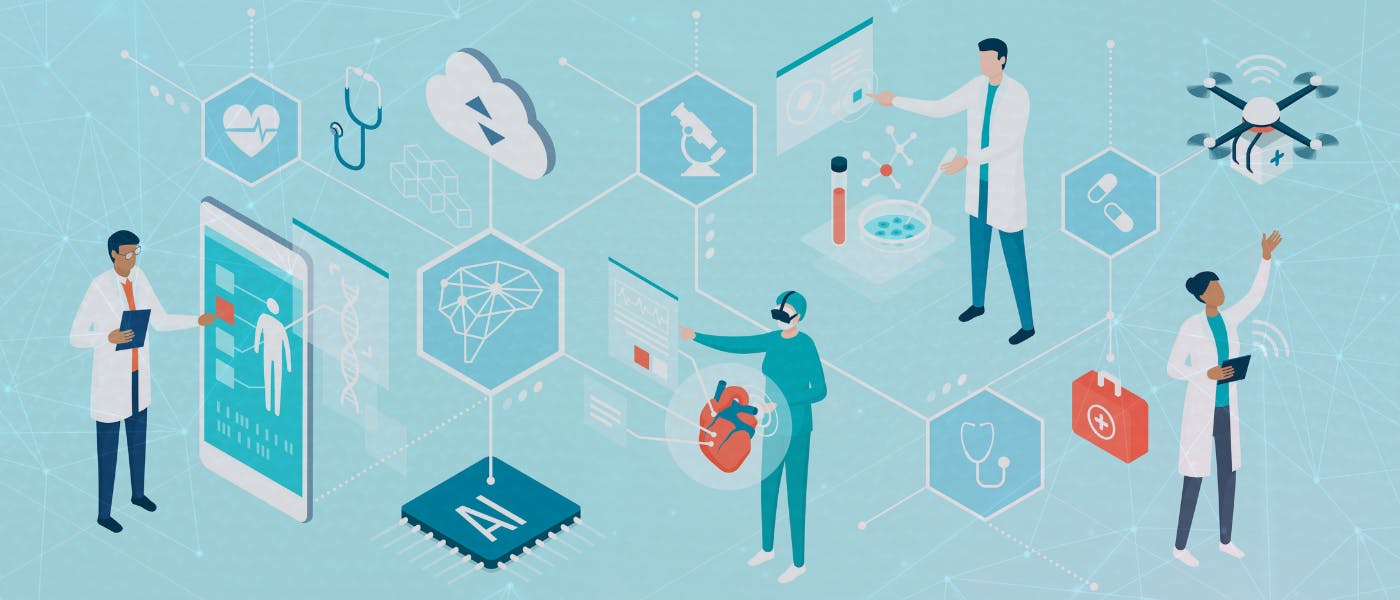It has been a decade of intelligence. Every new day, something new comes in that is revolutionizing healthcare and healthtech as a whole. And AI in the healthcare industry it's not new. It's evolved from very early clinical decision support to predictive analysis, to digital diagnostics, and is now also building generative tools for documentation and patient communication.
There is EHR automation, radiology, and even predictive modeling. We have built intelligence to predict outcomes, code charts, but not deliver what patients need when they need it. That is the real challenge that health tech AI has right now. It comes across as a smarter algorithm, but all it is is just a smarter enablement.
But in reality, what actually happens in today's system of healthtech?
So, assume a patient goes to a doctor with some sort of symptoms. The doctor examines them, diagnoses them using all “next gen” intelligence and generative AI tools, and they get diagnosed. It turns out that they have a chronic disorder. AI and tech have helped us find and identify the problem.
But what happens after that? What happens after a diagnosis is made? When a prescription is written, or when a therapy is recommended, or when an intervention is needed for that patient? Just the diagnosis is not going to treat the patient. Diagnosis plus care, plus actual medication and therapy, is what really treats the patient.
Roughly
Even though through all the diagnoses, all the AI, and all the tech were used, just treating the patient is not about the diagnosis. This is a system design failure, not a logistical one. It's disjointed data, no visibility from the provider, pharmacy, and limited patient-side intelligence, all turn into a design failure. AI models stop at the EHR boundary; they optimize clinical flow, but not operational execution. And that leads to the delivery chain lagging in interoperability and real-time feedback loops.
We have digitized diagnosis, but left the delivery analog.
Why Last-Mile Intelligence Matters
Everybody is concerned about the bigger picture, but let's look at the micro picture. One delayed medication, one delayed therapy for MS or cancer, can trigger re-admission or treatment restart. Every undelivered refrigerated medication becomes silent data losses that go untracked, unreported, and unprevented.
It may seem like one-off events that happen, but all of them contribute to a bigger operational failure that exists in healthcare and health tech. That’s why we need last-mile intelligence and last-mile care.
When I think of it, I think of it as a concept of operational intelligence and care using the same AI frameworks that we already use: prediction, pattern recognition, automation, algorithms, but applying them also to movement, temperature, timing, and patient readiness. When a delivery is so clinical, logistics also become part of the care. And that’s what an actual end-to-end health tech system needs to build: a closed loop that healthcare needs to complete.
What This Care Intelligence Would Look Like
Let’s imagine a very near-future architecture:
- Predictive routing that adjusts delivery based on a patient’s schedule and climate conditions. This helps patients know when their medications are coming and how they are going to be stored.
- AI-focused inventory forecasting that prevents waste and cold-chain failures, saving billions for both patients and providers.
- Transparent, context-driven notifications, not just tracking links, giving patients the right information and pharmacies the right instructions so that delivery happens smoothly.
At its heart, all of this is still about building tech. It’s driven by integration between EHRs, pharmacies, and delivery data streams, all executed by real-time machine learning models analyzing delivery outcomes like excursions or patient acceptance times.
This is what the real frontier can look like. It’s not just about building smarter AI; it’s about building connected artificial intelligence that unites the entire healthcare system.
That’s what I’ve learned about this problem: how last-mile breakdowns affect patient health and safety, and how designing logistics with clinical-grade standards requires rethinking both software and how it behaves together. Healthcare doesn’t need another dashboard; it needs an invisible infrastructure that patients never have to think about. The most advanced AI right now fails if the drug doesn’t arrive on time, and that’s something we have to change.


